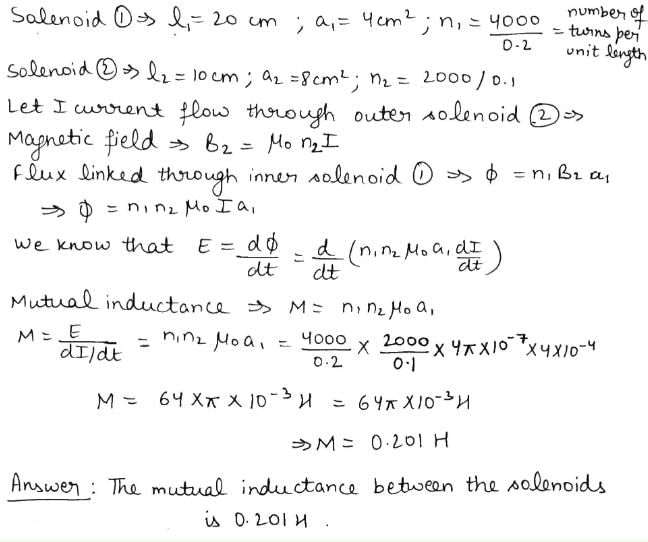VITEEE Physics Test - 5 - JEE MCQ
30 Questions MCQ Test - VITEEE Physics Test - 5
In photoelectric phenomenon, the number of photo electrons emitted depends on
A particle of mass 0.6 gm and having charge of 25 nC is moving horizontally with a uniform velocity 1.2 x 104 ms-1 in a uniform magnetic field; then the value of the magnetic induction is (g = 10 m s⁻²)
For electroplating a spoon, it is placed in the voltameter at
Consider telecommunication through optical fibres. Which of the following statements is not correct
The average power dissipated in a pure inductor of inductance L when an A.C. current is passing through it is
A wire of radius r has resistance R. If it is stretched to a radius of 3r/4, its resistance becomes
The length of given cylindrical wire is increased by 100%. Due to the consequent decrease in diameter the change in the resistance of the wire will be
If an electron revolves in the path of a circle of radius of 0.5x 10-10 m at a frequency of 5 x 1015 cycles ∕ sec , the electric current in the circle is (charge of electron = 1.6 x 10-19 C )
At what temperature, the resistance of a copper wire will become three times its value at 0oC ? (Temperature coefficient of resistance for copper = 4 x 10-3per oC)
If particles are moving with same velocity, then maximum de-Broglie's wavelength will be for
A solenoid of length 20 cm area of cross-section 4 cm2 and having 4000 turns is placed inside another solenoid of 2000 turns having a cross-section area 8 cm2 and length 10 cm. The mutual inductance of the system is
Two coils are placed close to eachother. The mutual inductance of the pair of coils depends upon
Eight dipoles of charges of magnitude e are placed inside a cube. The total electric flux coming out of the cube will be
Two charges -10 C and + 10 C are placed 10cm apart. Potential at the centre of the line joining two charges is
Two equal charges, q each are placed at a distance of 2a, and a third charge -2q is placed at the mid point. The potential energy of the system is
If an uncharged capacitor is charged by connecting it to a battery, then the amount of energy lost as heat is
Two equal charges q each are placed at a distance of 2a. If a third charge-2q is placed at the mid-point, then potential energy of the system is
In β + decay process, the following changes take place inside the nucleus
A current carrying loop is free to return in a uniform magnetic field. The loop will then come into equilibrium when its plane is inclined at
Which of the following is more effective in inducing nuclear fission
What is the Q-value of the reaction
p + 7 Li → 4 He + 4 He
The atomic masses of 1 H , 4 H e and 7 L i are 1.007825 u, 4.002603 u and 7.016004 u respectively
The refractive index of a certain glass is 1.5, for a light of wavelength 6000 Å . When light (c = 3 x 108 m s-1)passed through this glass, its wavelength is
The minimum potential difference between the base and emitter required to switch a silicon transistor 'ON' is approximately
The potential barrier, in the depletion of layer, is due to















